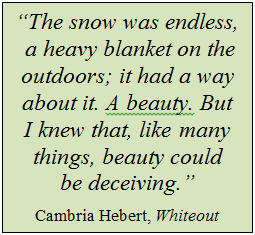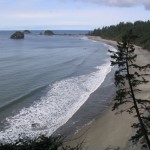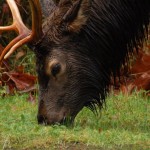WHAT
In Olympic National Park, opportunities exist for participating in many winter activities, including winter hiking, climbing, skiing—both downhill and cross-country—and snowshoeing. In addition, there is ample opportunity to view a variety of snow scenes, such as lofty peaks adorned with snow-dusted spires, icy ledges and crags, frozen streams, or foliage crowned by frost. Some of these activities take more planning than others.
Hurricane Ridge, a 45-minute drive from Port Angeles, is the center of most of the Park’s winter activity (aside from the Coastal areas). Whenever possible, Hurricane Ridge Road and the Visitor Center is open Friday, Saturday and Sunday throughout the season. Rangers are at the Visitor Center and a winter sports rental shop and food concession share the lower level with the restrooms. When there is sufficient snow and the road is open, a local non-profit organization runs a downhill ski concession. For more information go to hurricaneridge.com/.
Access to the Ridge is by private vehicle only and every vehicle is required to carry tire chains or tire-socks between November 15th and April 1st. Due to the sequester of Federal Budgets, the Ranger-led snowshoe walks have been cancelled for the 2013-14 season. Some trails at the Ridge and elsewhere in the Park are either snow-free or so frequently traveled that they are hikeable throughout the season.
WHEN
Snow begins falling in the high country—above 5,000 feet—as early as September and certainly by mid-October in a normal year. As fall turns to winter, the snowline descends and a seasonal snow pack accumulates above 2,500 ft. in most areas of the Park. Mid-March marks the beginning of its slow retreat to the high country again, completing the cycle most often by the end of July.
A few times each winter the entire Olympic Peninsula will see accumulations of snow all the way down to sea level. There are exceptions and sometimes inexplicable contradictions, of course, including years when lower elevations receive no snow or times when the high country doesn’t become snow-free for the entire year.
 Winter Storm warnings are a regular occurrence in the Park, characterized by high winds and significant snow fall, often measured in feet per day. The wettest snow in the country falls routinely on the Blue Glacier on Mt. Olympus, and while wet snow is most common, there are many snow events that deliver deep powder snow. Wet or dry, it’s the wind—particularly at the upper elevations, at or above tree line—that helps create the snow drifts, cornices and unconsolidated slab formations that present serious hazards for the unaware.
Winter Storm warnings are a regular occurrence in the Park, characterized by high winds and significant snow fall, often measured in feet per day. The wettest snow in the country falls routinely on the Blue Glacier on Mt. Olympus, and while wet snow is most common, there are many snow events that deliver deep powder snow. Wet or dry, it’s the wind—particularly at the upper elevations, at or above tree line—that helps create the snow drifts, cornices and unconsolidated slab formations that present serious hazards for the unaware.
WHY
Most of the Park, and a portion of the eastern Olympic National Forest, is designated as Wilderness. This is never more apparent than when snow blankets the landscape. Roads are gated for the winter and those that are not become all but impassable. The few back country Rangers that work in the Park, are furloughed for the season. Trails, which are unmarked for winter travel, disappear, sliding into the nether-land of the innumerable flat spots between two trees. The distinguishing features of lakes and meadows blur into obscurity, leaving a lonely, dangerous, and often misleading common denominator: an open space without trees.
The mountains of the Pacific Northwest are rugged and vast, particularly in the grip of winter. Each year people find themselves lost, sometimes tragically so, and the Olympic National Park and National Forest is no exception to this very real possibility. Know what you’re up against, where you’re going, and have the skills and gear demanded of what can be a deadly environment. Remember, the wilderness neither loves nor hates you, but it always holds you accountable.

Avalanche Danger must be at the top of a list of concerns for backcountry travelers and climbers. Timely and accurate information for the Olympic Mountains can be accessed at www.nwac.us/.
HOW
Depending on the type and location of any activity undertaken, it is always wise to first consult with either:
- The Park’s Visitor Center, (360) 565-3130
- The Wilderness Information Center, (360) 565-3100
- Or the Hood Canal Ranger District – Quilcene, WA, (360) 765-2200.
For additional information about snow in general, and to learn some important cold weather survival tips, visit the following websites:



